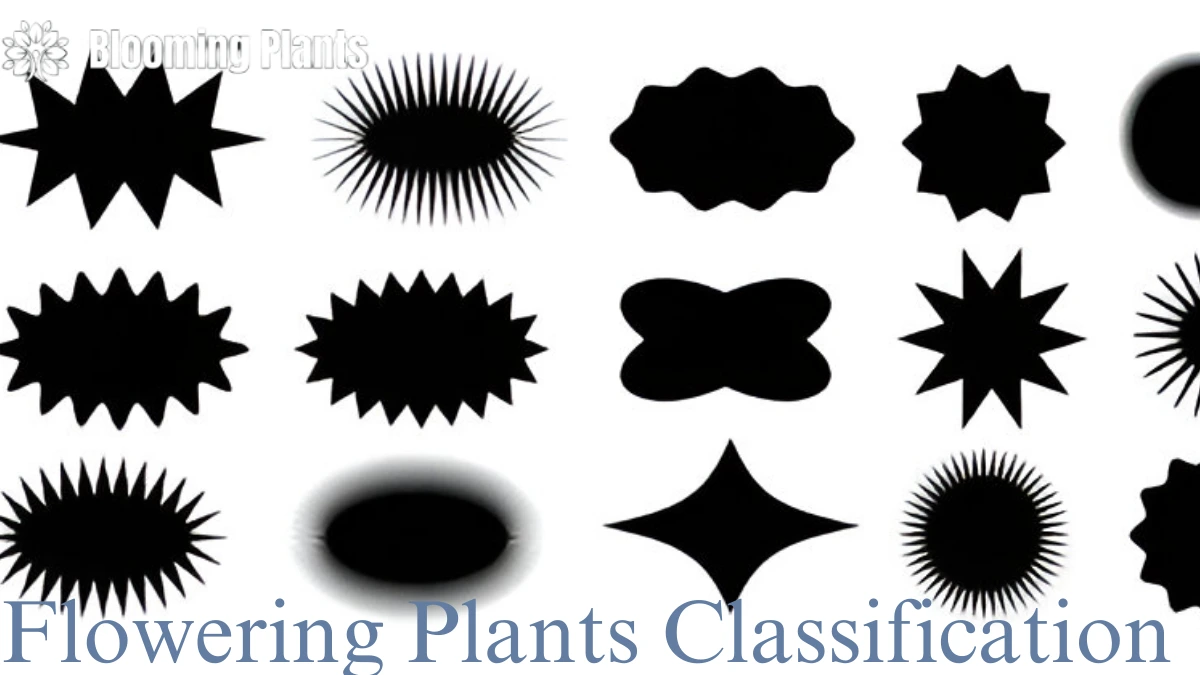1. Introduction to Flowering Plants Classification
Why Classify Flowering Plants?
Classification is essential for organizing the vast diversity of flowering plants into structured categories. This helps scientists, horticulturists, and gardeners understand relationships among species, predict characteristics, and facilitate effective communication. By grouping plants based on similarities and differences, we create a systematic approach to studying their evolutionary traits and ecological roles.
Overview of Flowering Plants
Flowering plants, or angiosperms, are the most diverse group of plants, comprising over 300,000 species. Their defining feature is the production of flowers and seeds enclosed within a fruit. These plants dominate most terrestrial ecosystems, providing food, shelter, and oxygen for countless organisms.
2. Major Classifications of Flowering Plants
Monocotyledons (Monocots)
Monocots are characterized by a single embryonic leaf (cotyledon). They include grasses, lilies, and orchids. Monocots typically exhibit parallel venation in their leaves, fibrous root systems, and floral parts in multiples of three. Their vascular bundles are scattered within the stem, and they lack secondary growth.
Dicotyledons (Dicots) of Flowering Plants Classification
Dicots possess two embryonic leaves. Examples include roses, sunflowers, and oaks. Dicots exhibit reticulate venation, a taproot system, and floral parts in multiples of four or five. Their vascular bundles are arranged in a ring, allowing for secondary growth, which results in the formation of wood.
3. Evolutionary Insights into Flowering Plants
Early Origins of Flowering Plants Classification
Flowering plants first appeared around 140 million years ago during the Cretaceous period. Fossil evidence suggests that they rapidly diversified, becoming the dominant plant group by the end of the Cretaceous.
Adaptive Radiation
Angiosperms underwent adaptive radiation, evolving diverse forms and structures to occupy various ecological niches. This includes adaptations such as specialized pollination mechanisms and efficient seed dispersal methods.
4. Classification Systems in Botany
The Linnaean System
Developed by Carl Linnaeus, this system classifies plants based on morphological characteristics, such as flower structure and reproductive parts. It forms the foundation of modern taxonomy.
Phylogenetic Classification
Phylogenetic classification focuses on evolutionary relationships. It uses genetic data to trace common ancestry and group plants accordingly. This approach has led to significant revisions in traditional classifications.
5. Understanding Family-Level Classification
Key Plant Families
Some prominent flowering plant families include:
- Asteraceae: Includes daisies and sunflowers, known for composite flower heads.
- Fabaceae: Encompasses legumes like peas and beans, vital for nitrogen fixation.
- Orchidaceae: Represents orchids, famous for their intricate and exotic flowers.
Importance of Family-Level Study
Understanding plant families helps identify species, predict traits, and explore ecological roles. For instance, knowing a plant belongs to the Fabaceae family suggests its potential to improve soil fertility.
6. Economic Importance of Flowering Plants
Agriculture and Food
Flowering plants form the backbone of agriculture. Staples like rice, wheat, and maize belong to angiosperms. Fruits, vegetables, and oils also originate from this group, sustaining human populations worldwide.
Medicinal Uses
Many flowering plants possess medicinal properties. For instance, the foxglove plant (Digitalis) is used to produce heart medication, while willow bark (Salix) led to the development of aspirin.
7. Ecological Significance of Flowering Plants
Role in Pollination of Flowering Plants Classification
Flowering plants have co-evolved with pollinators, developing features like nectar and vibrant petals to attract bees, birds, and butterflies. This mutualistic relationship ensures genetic diversity and ecosystem stability.
Habitat and Oxygen Production
Angiosperms provide habitat and food for countless organisms. Through photosynthesis, they produce oxygen, maintaining atmospheric balance and supporting life on Earth.
8. Morphological Features of Flowering Plants
Floral Structures of Flowering Plants Classification
Flowers consist of sepals, petals, stamens, and carpels. These structures are adapted for reproduction, facilitating pollination and seed production.
Leaf and Stem Variations
Leaves and stems exhibit diverse forms, from broad, flat leaves in dicots to narrow, elongated ones in monocots. These adaptations enable plants to survive in various environments.
9. Challenges in Flowering Plant Classification
Hybridization
Hybridization blurs the lines between species, complicating classification efforts. Natural and artificial hybrids exhibit characteristics of multiple parent species.
Rapid Advances in Genetics
While genetic tools offer deeper insights, they also reveal complexities, such as cryptic species and convergent evolution, challenging traditional taxonomy.
10. Conservation of Flowering Plants
Threats to Biodiversity
Habitat loss, climate change, and invasive species threaten flowering plant diversity. Protecting these plants ensures the survival of entire ecosystems.
Preservation Efforts
Botanical gardens, seed banks, and reforestation projects play a crucial role in conserving flowering plants. Educating the public about their importance further supports conservation initiatives.
11. Fun Facts About Flowering Plants
- The Rafflesia arnoldii produces the largest flower, spanning up to 3 feet.
- Orchids are the most diverse flowering plant family, with over 25,000 species.
- The sunflower’s head consists of hundreds of tiny individual flowers, known as florets.
12. Conclusion: Embracing the Diversity of Flowering Plants
Understanding flowering plant classification enhances our appreciation of their beauty, complexity, and importance. By exploring their evolutionary history, ecological roles, and economic significance, we gain insights into the natural world’s interconnectedness. Protecting these plants ensures a sustainable future for generations to come.
FAQs
- What are the main types of flowering plants? Flowering plants are divided into monocots and dicots, based on their seed structure.
- Why is flowering plant classification important? It helps organize plant diversity, understand evolutionary relationships, and predict characteristics.
- Which classification system is widely used? The Linnaean system and phylogenetic classification are the most prominent.
- What is the role of flowering plants in ecosystems? They provide oxygen, food, and habitat, and play a key role in pollination.
- How can we conserve flowering plants? Conservation efforts include habitat protection, botanical gardens, and seed banks.

